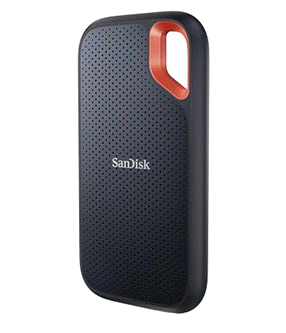2025-07-25 11:12:00
blog.jgc.org
I’ve written before about my 1976 KIM-1 and code I wrote for a similar one long ago. But I hadn’t done much with the KIM-1 and strongly believe that old hardware need to be living machines not still lives. But using the KIM-1 directly (via its keypad and little hexadecimal display) is painful. I wanted to be able to use it with a terminal.
Luckily, the KIM-1 was designed to interface to a terminal: a Model 33 ASR Teletype. Teletypes use a type of interface which is unusual to most people (unless you work with industrial machinery where it’s pretty common). That interface is a current loop.
A current loop uses current (often 20mA) rather than voltage (such as the voltage levels seen in common serial interfaces). Prior to the creation of RS-232, current loops were very common. Current loops are still used in industrial settings partly because they have good noise immunity, can go for long distances, and are simple and reliable.
In the KIM-1 manual there’s a picture of the way its current loop works when connected to a Teletype:
When the KIM-1 wants to send data to the Teletype it uses pins S and U of one of its edge connectors. S is permanently connected to +5V via a 150 ohm resistor. When the KIM-1 receives data from the Teletype’s keyboard it uses pins R and T. Just like S, R is permanently connected to +5V. The important thing to note is that the KIM-1 is responsible for the current: the Teletype is entirely “dumb”. This will matter later in this blog post.
A simple kit to build. Since USB to RS-232 adapters are easy to find I’d be able to communicate with the KIM-1 using it. But first check the circuit diagram of this adapter. There’s a small problem on the receive side.
As is pretty common with current loop applications, optoisolators are used. OK1 handles when the device connected to the RS-232 transmits something. And you can see from the diagram, it expects to be getting 5V, 20mA in on its pin 5 and then out again on pin 4. So, that’ll work perfectly for the “keyboard” connection to the KIM-1 (pins R and T).
But the receive side is a different story. It’s handled by OK2 and it’s expecting 5V, 20mA on pin 1, but pin 2 goes to GND. So, there’s no “loop” back to the device. This won’t work with the KIM-1 without a small modification.
I built the kit and and tested it against the KIM-1 like this:
Looks messy but it validated the little modification I needed to make and that I could talk to the KIM-1. Here it is talking at 300 baud using the RS-232 to USB adapter seen above.
So, what’s the modification? Well, pin 2 of OK2 goes to ground and we don’t want it to, we want it to go the KIM-1’s pin U. There are two ways to do this. I could have cut the track on the back of the board that goes from pin 2 to ground, and soldered a wire on the back.
But this kit came with all the chips socketed so I took an even simpler route. Bend pin 2 away from the socket and solder directly to it.
And that worked fine. The kit also came with a nice little box and so the final adapter looks neat.
The grey wire goes to the KIM-1, the white wire is a USB-A cable that I’m using to power the adapter and the KIM-1 itself.
The KIM-1 will happily communicate as 1200 baud with 7 bit ASCII and 2 stop bits. I’m using minicom to communicate with it. The main thing is to set the delete key to send DEL instead of BS since the KIM-1 needs to receive a DEL on start up so that it can measure the Mac’s transmission speed.
One of the Teletype functions available is to load a program from punched tape. I don’t have an actual Teletype but I can emulate the punched tape format and that’ll allow me to upload programs easily.
The format itself is not complicated.
Keep your files stored safely and securely with the SanDisk 2TB Extreme Portable SSD. With over 69,505 ratings and an impressive 4.6 out of 5 stars, this product has been purchased over 8K+ times in the past month. At only $129.99, this Amazon’s Choice product is a must-have for secure file storage.
Help keep private content private with the included password protection featuring 256-bit AES hardware encryption. Order now for just $129.99 on Amazon!
Help Power Techcratic’s Future – Scan To Support
If Techcratic’s content and insights have helped you, consider giving back by supporting the platform with crypto. Every contribution makes a difference, whether it’s for high-quality content, server maintenance, or future updates. Techcratic is constantly evolving, and your support helps drive that progress.
As a solo operator who wears all the hats, creating content, managing the tech, and running the site, your support allows me to stay focused on delivering valuable resources. Your support keeps everything running smoothly and enables me to continue creating the content you love. I’m deeply grateful for your support, it truly means the world to me! Thank you!
|
BITCOIN
bc1qlszw7elx2qahjwvaryh0tkgg8y68enw30gpvge Scan the QR code with your crypto wallet app |
|
DOGECOIN
D64GwvvYQxFXYyan3oQCrmWfidf6T3JpBA Scan the QR code with your crypto wallet app |
|
ETHEREUM
0xe9BC980DF3d985730dA827996B43E4A62CCBAA7a Scan the QR code with your crypto wallet app |
Please read the Privacy and Security Disclaimer on how Techcratic handles your support.
Disclaimer: As an Amazon Associate, Techcratic may earn from qualifying purchases.























































































![Mars Attacks! [DVD]](https://techcratic.com/wp-content/uploads/2025/07/81k3JO57X-L._SL1500_-360x180.jpg)



























